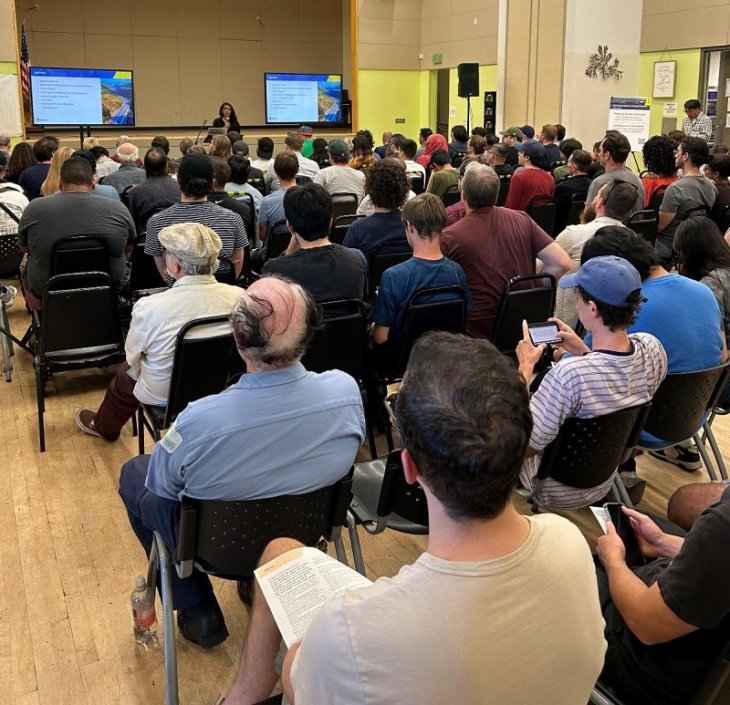The county’s inspector general praised the Sheriff’s Department for its efforts to improve conditions at jails in a report presented to the Board of Supervisors Tuesday.
Inspector General Max Huntsman said he and his staff were “pleased with the department’s efforts to identify issues and reform its Custody Services and Patrol Division policies, practices, and operations.”
In particular, the report cited efforts to reduce the number of prisoners in isolation, increase inmates’ time out of their cells and better train custody deputies to deal with mentally ill inmates.
Changes in policies dealing with transgender inmates were also commended.
Department policy had generally been to house transgender women in a special section of Men’s Central Jail, separate from the general population. Transgender men were part of the general women’s population at the Century Regional Detention Facility.
That solution has typically kept inmates safe, according to the report, though it acknowledged special problems with transgender inmates with mental illness or subject to disciplinary measures.
In those cases, transgender women are typically held in cells in all- male pods and have been subject to verbal and emotional abuse, leading for calls to create a separate unit.
The department has created a Gender Identity Committee that now considers inmates’ needs on a case-by-case basis.
The committee granted the request of one transgender inmate to be reassigned to the Century Regional Detention Facility, housing her in a segregated unit after consultation with community advocates.
“The OIG and the department had some initial concerns for the prisoner’s safety and emotional well-being, but … she is happy with her new housing assignment,” the report stated.
Huntsman said Sheriff Jim McDonnell has consistently been willing to collaborate and he and his staff are receptive to recommendations.
However, the statistics offered in the report raise some concerns.
Inmate on inmate attacks nearly doubled between 2011 and 2015, the last year for which data was provided.
And while both assaults on staff and the use of force by custody deputies declined from 2009-2012, they have been steadily increasing and more than doubled since then.
Assistant Sheriff Kelly Harrington told the board that use of force remains a last resort but said the reasons for its increase were complex.
One issue is the “skyrocketing” number of inmates with mental illness, which represents “an unstable population inside the jails,” Harrington said.
And even as the department is praised for adding more out-of-cell programming for inmates, that movement in and out of the cells represents more opportunities for some kind of assault on other inmates or staff to take place, Harrington said.
Custody officials have consistently pointed to more diligent reporting of the use of force as another reason for the rise.
“With the closed-captioned televisions that are there now, everything is picked,” Harrington said. “So the staff are reporting all the use of force, whether it be minor or not.”
Harrington pointed out the most of the increase relates to a “very minor type of force,” such as physically guiding inmates or using pepper spray on them.
“It’s not like you would see in the past where inmates are having their bones broken or their (eye sockets) broken,” Harrington said.
There has been a “drastic reduction” in those types of incidents, Harrington told the board.
Another issue is the home-brewed alcohol that inmates make from candy they buy in the jail commissary. When inmates are drunk, the odds of an altercation go up.
And though it’s long been a problem, Harrington also mentioned the antiquated design of Men’s Central Jail.
Supervisor Kathryn Barger agreed.
“We have a jail that, quite frankly, is not suitable for use,” Barger said. “When I first started, that was the debate. Do we close it?”
Barger began working as a county intern 28 years ago.
A replacement for the downtown jail was approved by the board in 2015 — over the objections of community activists — and planning is underway.
The report also aggregates statistics that are sometimes hard to access.
Five civilians and one deputy were killed in deputy-involved shootings during the last three months of 2016, according to a report presented Tuesday by the county’s inspector general.
In addition to the fatalities, four civilians and two deputies were shot but survived. One of those deputies was critically injured.
There were 11 deputy-involved shootings in total during the fourth quarter of last year. All of the individuals shot or shot at by deputies were men. Six were Hispanic, three were white, one was black and one was Asian.
Each of the shootings involved an injury or death has been submitted to the District Attorney’s Office for review.






















